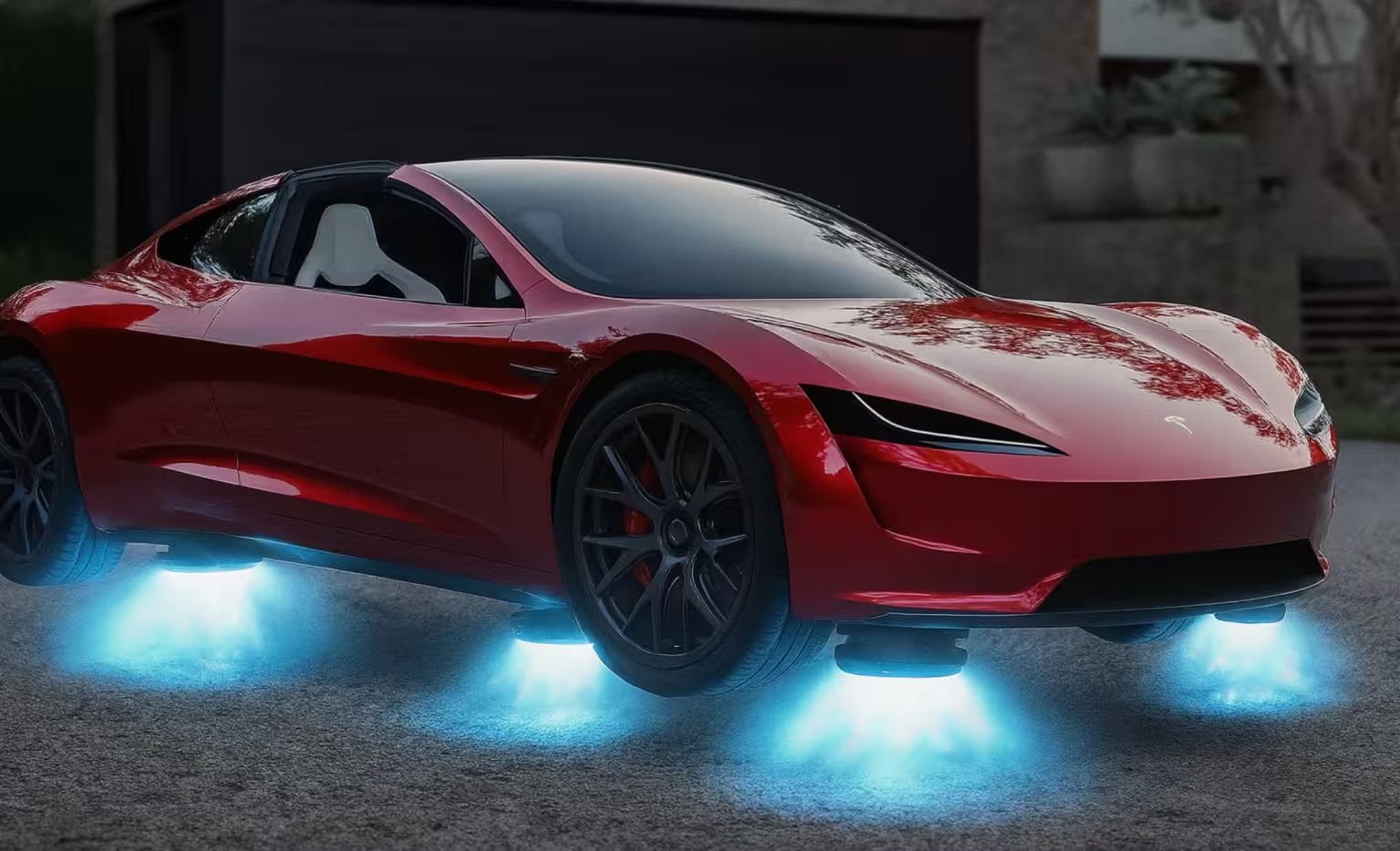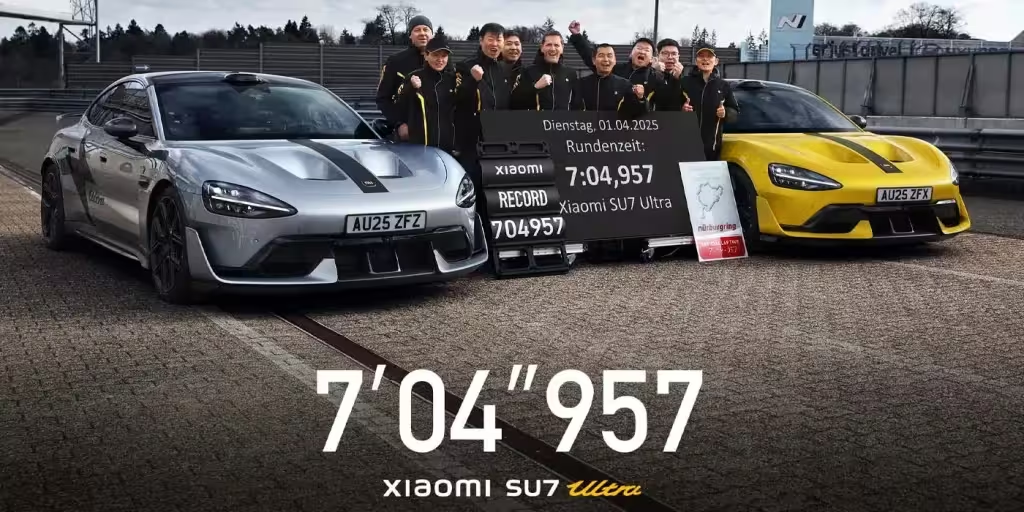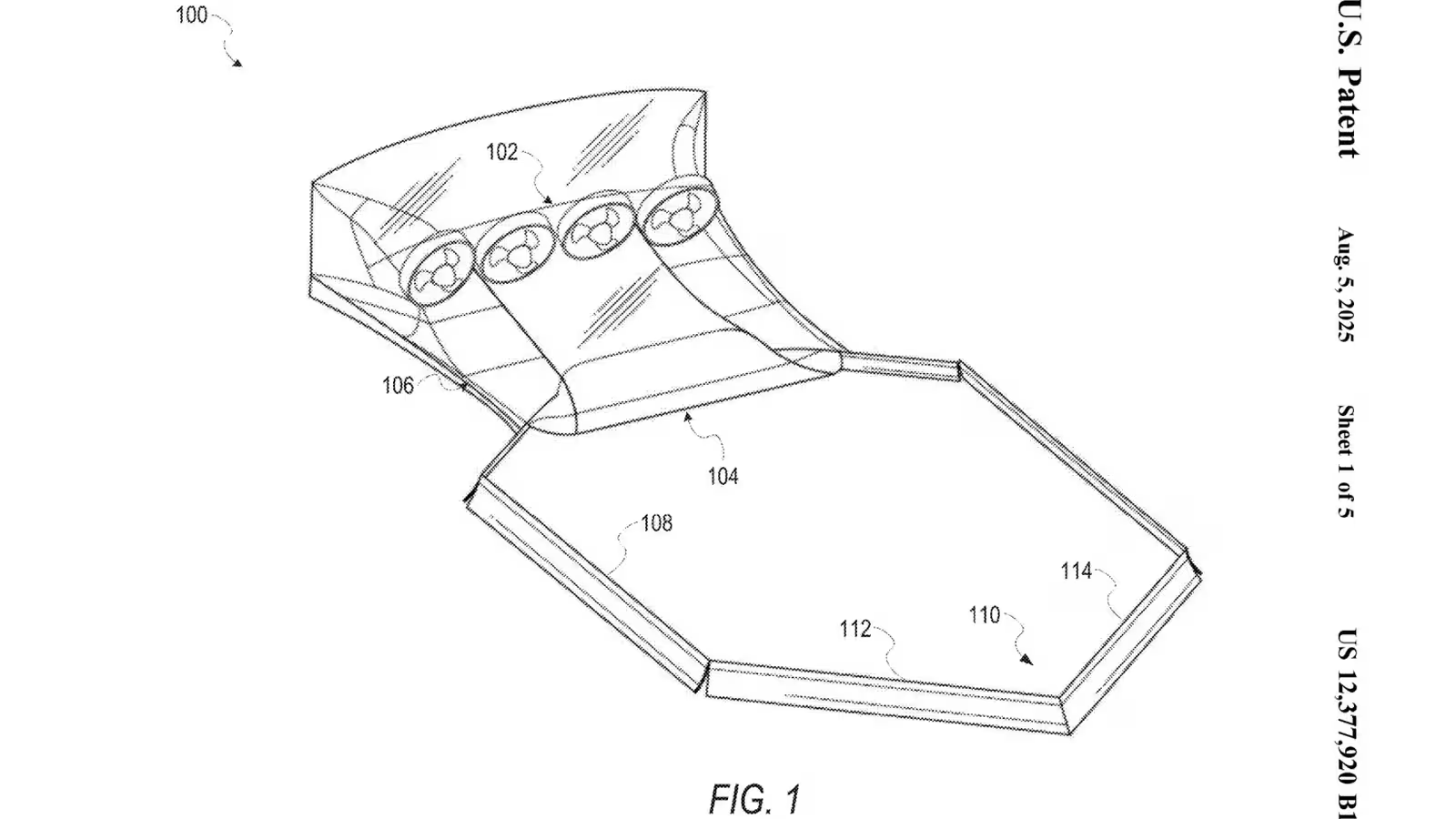7 Minutes
The Long-Awaited Tesla Roadster: Fact vs Fiction
In 2017, Tesla stunned the automotive world by unveiling a prototype of its next-generation Roadster—a move that signaled a bold new era for electric supercars. Presented with breathtaking performance specs, the Roadster was positioned as an EV that would deliver a “hard-core smackdown to gasoline-powered cars.” Fast forward to today, and the production Roadster remains elusive, but a new patent filing reveals Tesla’s direction on one of its most hyped features: the SpaceX package.
From Cold Gas Thrusters to Groundbreaking Aerodynamics: The Evolution of the ‘SpaceX Package’
Musk’s Vision: A Car That Could ‘Fly’
When CEO Elon Musk teased the so-called “SpaceX package,” he spoke of cold gas thrusters that could push the Roadster’s performance to unprecedented heights, even hinting at a capability for brief flight. The idea, according to Musk, was to shatter the limitations of traditional traction—something already encountered by high-torque electric vehicles, whose incredible power is often bottlenecked by tire grip rather than drivetrain capability.
Traditionally, manufacturers have overcome this through clever aerodynamics—adding wings or spoilers to increase downforce, which literally presses the car harder onto the tarmac, maximizing tire performance. But even this approach taps out at a certain point, especially at lower speeds. Musk’s proposal: supplement these techniques with the thrust from cold gas propulsion—think miniature rocket boosters—to accelerate, brake, or maybe even ‘fly.’
The Reality Check: Physics Prevails
Despite Musk’s grand ambitions, the newest patent indicates Tesla has wisely taken a more physics-based approach. Rather than attempting temporary flight, the patent details a system much more familiar to motorsport historians: the “fan car.”
The ‘Fan Car’ Concept: Reinventing Active Aerodynamics
How Fan Cars Enhance Performance
The fan car concept isn’t entirely new. Dating back to the 1970s, legendary race cars like the Brabham BT46B used powerful rear fans to suck air from beneath the chassis, creating a low-pressure zone that tightly “sucks” the car onto the track (technically, the high atmospheric pressure above pushes it downward). This vacuum effect massively increases grip, especially in corners and at slower speeds where conventional aerodynamic elements lose effectiveness.
Tesla’s patent describes a modern version of this concept. Underneath the vehicle’s floorpan sits a geometric arrangement—likely hexagonal—of high-powered fans combined with deployable side skirts. These skirts isolate the airflow under the car, preventing atmospheric air from neutralizing the low-pressure vacuum, thereby maximizing the downforce generated by the fans.

Active, Adaptive, and Track-Savvy
Unlike historic implementations, Tesla’s design introduces advanced control. The system can automatically adjust the fan output and side skirt deployment based on road conditions, speed, vehicle weight transfer, and digital map data. For example, on a pristine race track, the skirts and fans can operate at maximum efficiency, delivering peak downforce. On public roads fraught with potholes or debris, the system can adapt for safety and practicality.
Moreover, by integrating sensor and GPS data, Tesla can dynamically optimize the aerodynamic package, tailoring performance for specific racetracks—or even specific corners—providing a level of active aerodynamics few production cars have ever managed.
The Truth About Tesla’s Patent: No ‘Flying’—Just Real Performance Gains
The recently filed patent offers no mention of “flight,” “thrusters,” or “rockets.” In fact, it’s designed to do the exact opposite of making the car airborne—it’s engineered to keep the car rooted to the ground. While the patent doesn’t completely exclude the potential of future thruster-based solutions working in tandem with the fan system, there’s a clear shift from fantastical ideas to practical, race-proven engineering.
So, could we eventually see lateral cold-gas thrusters for even more dramatic shifts in performance? It’s possible, though such additions would greatly increase weight and complexity and might not deliver enough advantage to justify their cost or potential safety trade-offs.

Tesla Roadster Specifications: What’s Been Promised?
Announced Specs (Subject to Change Until Launch)
- 0-60 mph: As low as 1.9 seconds
- Top Speed: Over 250 mph (claimed)
- Range: Up to 620 miles (on a single charge)
- Torque: Immense, with reportedly more than 10,000 Nm wheel torque
- Seating: 2+2 configuration
These figures, especially paired with an active aerodynamic package, position the Roadster as a potential world-beater in the performance electric car segment—if and when it arrives.
Roadster’s Design and Market Placement
Tesla has always aimed for a futuristic design language, and the Roadster prototype revealed so far boasts sleek lines, a minimalist interior, and a focus on reducing drag to enhance both speed and range. The inclusion of a “fan car” style active aerodynamic system would add visual excitement and technological cachet, while also building a case for Tesla’s leadership in electric performance cars.
Market-wise, the Roadster is aimed squarely at supercar buyers—those looking at high-end exotics like the Bugatti Chiron, Rimac Nevera, or Lotus Evija—but with the promise of cutting-edge electric technology.
Performance Showdown: Tesla Roadster vs. Today’s Fastest EVs
The Supercar Playing Field Has Changed
Since the Roadster was first announced, the performance EV landscape has exploded. The Rimac Nevera, boasting 2,078 horsepower, beats the Bugatti Chiron Super Sport to 300 km/h by 3.5 seconds. The Lotus Evija X has set record-breaking Nurburgring laps, trailing only dedicated track specials. Even Xiaomi, once known solely for smartphones, has released the SU7 Ultra with 1,548 hp and world-class acceleration.
Any argument that electric cars aren’t performance-heavyweights is now simply out of date. Tesla’s original goal—to prove that EVs can outgun any gasoline engine—has not only been achieved, but arguably surpassed by a new generation of competitors.
.avif)
What Makes Tesla’s Approach Unique?
While other hypercar builders have achieved staggering straight-line and lap times, none have yet leveraged an active fan system for downforce in a production road car. Tesla’s adaptive fan car solution stands out by promising real-world usability—able to function both on and off the track with smart, automatically adjusting aerodynamics. This could give the Roadster a unique edge in grip, safety, and dynamic handling.
The McMurtry Spierling: Proof That the Fan Car Revolution Works
It’s worth noting the idea of an electric fan car isn’t wholly new. The spectacular McMurtry Spierling, a purpose-built one-seat EV, has already wowed the automotive world as the fastest car ever at the Goodwood Festival of Speed—thanks to 2,000 kg of instant downforce generated by its fan system, even at rest or low speeds.
The Spierling even demonstrated its prowess by driving upside-down—proving the effectiveness of extreme downforce. But while it’s a limited-edition track weapon, Tesla aims to adapt similar technology for real-world road use, filtered for dust and pebbles by design, and tempered for safety.
Practical Considerations: Fan Cars for the Real World
Tesla’s patent hints at further adaptability absent in McMurtry’s singular focus. The Roadster would cater to both road and track, automatically adjusting its fans and skirts based on driving surface and driving mode. Special filters are included in the design to prevent debris from being ejected at high speed, addressing a key road legality issue.
One challenge remains: driver skill. With the ability to produce massive, configurable downforce, the handling limits of the Roadster will be unprecedented. But if drivers mistakenly assume max downforce and find the system disengaged—such as in accidental off-track scenarios or system failures—there’s a risk of sudden instability. It remains uncertain whether Tesla will restrict the system to track-use only or include additional safety checks.
An Overdue Icon: Will Tesla Deliver on the Roadster Promise?
After nearly a decade since its surprise debut, the Roadster’s full-launch timeline is still unclear. The patent filing, however, is a positive sign of progress and a major step forward in EV performance technology. But with rivals already establishing electric supercar supremacy, Tesla needs the Roadster to be more than just fast—it must bring something truly new.
Conclusion: Redefining the Supercar for an Electric Era
For automotive enthusiasts, the Roadster’s long journey remains a source of anticipation, skepticism, and hope. Tesla’s new patent signals a shift from outlandish promises of flight to grounded, innovative engineering—leveraging the science of ground effect and active aerodynamics. While the era of electric dominance among supercars is well underway, the Roadster’s adaptive fan system could still carve out a unique niche.
Ultimately, Tesla’s fan car technology—if it makes it to production—could influence not only future EVs but the world of performance cars at large. The biggest question is simply: When will the world get to see it?
As always, car enthusiasts and the marketplace alike are watching, waiting for Tesla to deliver on its next transformative promise.
Source: electrek



Comments